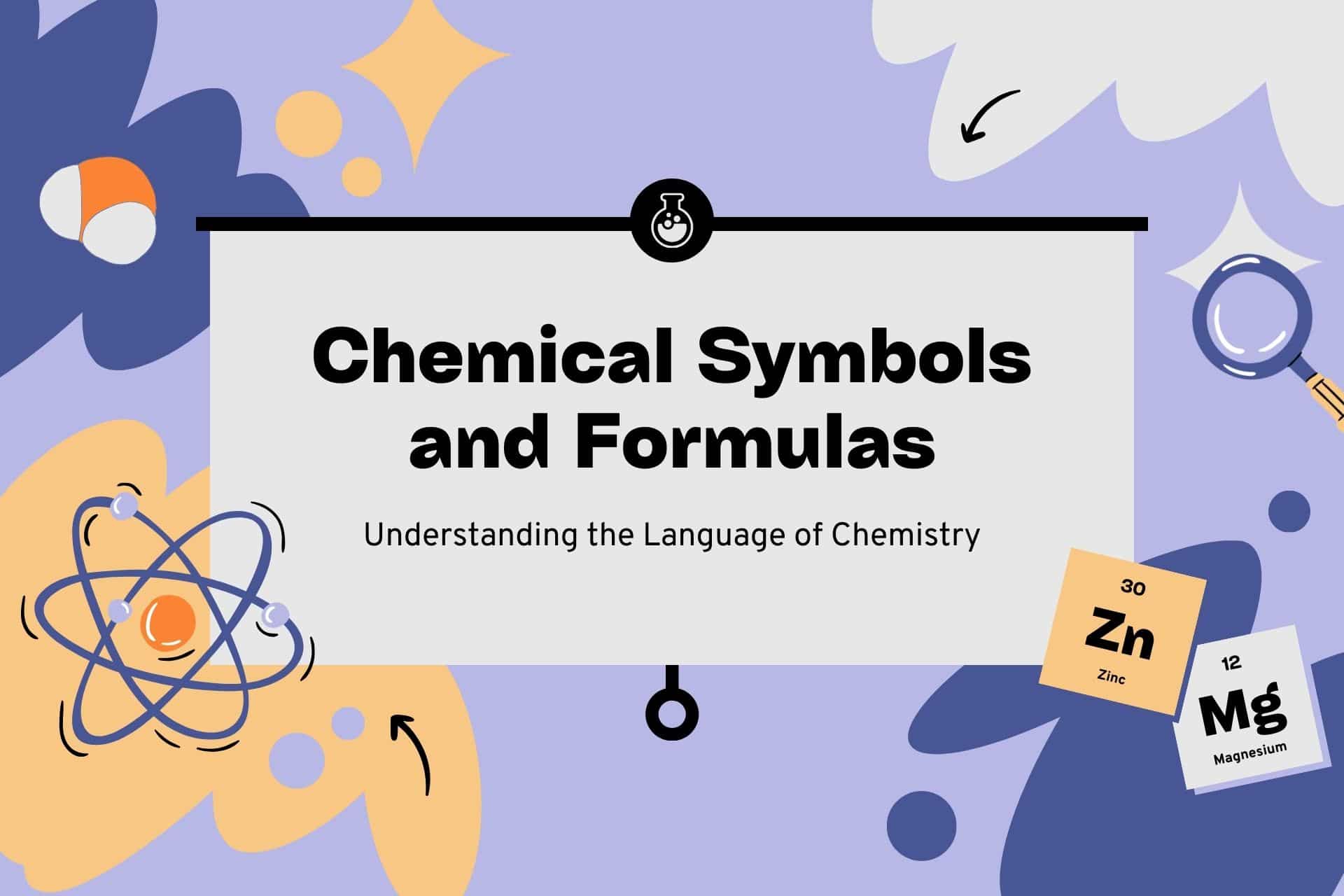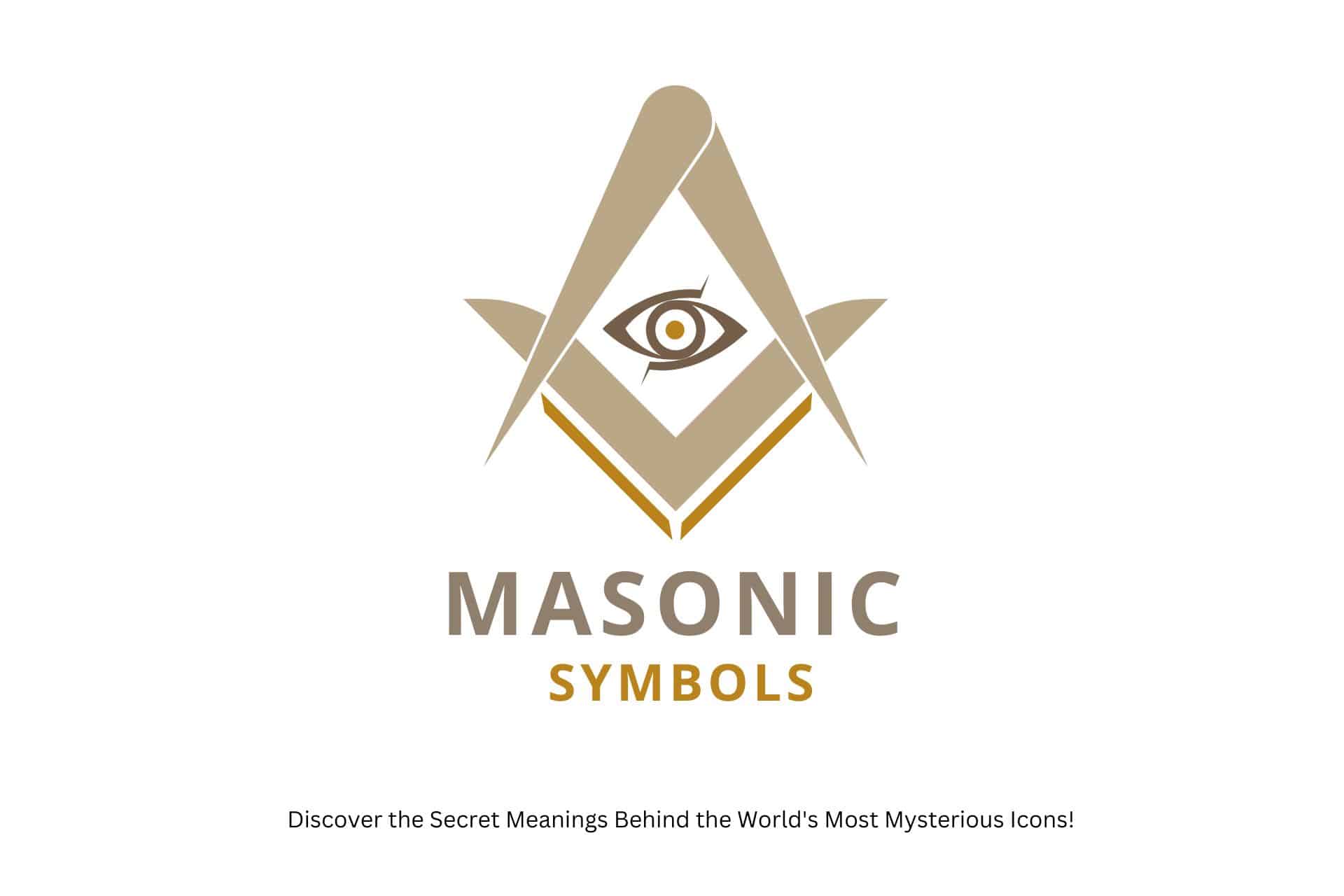Unlock the Mysteries of the Universe with These Hidden Codes!
Are you fascinated by the cryptic letters on the periodic table and eager to crack their code? If you’ve ever wondered about the stories and science behind chemical symbols, you’re in the right place.
This article will demystify these compact carriers of vast scientific knowledge, offering a comprehensive guide to their history, significance, and how they connect our world in unseen ways.
Whether you’re a science enthusiast or simply curious about the elements that make up everything around us, you’ll find valuable insights and intriguing facts here.
Continue reading to unlock the secrets of chemical symbols and discover the language that writes the universe’s laws.
Let’s get started!

Here’s What You Will Find

Key Takeaways
Chemical Symbols
Chemical Symbols are Universal Shorthand: Chemical symbols serve as a concise and universal language for representing elements and compounds, making it easier for scientists, students, and the general public to communicate complex chemical information accurately and efficiently.
From Ancient Alchemy to Modern Chemistry: The evolution of chemical symbols from the cryptic signs of alchemy to the standardized notations used today reflects the progression of chemistry from a mystical practice to a rigorous science, illustrating how these symbols have become integral to our understanding of the material world.
Widespread Applications in Society: Beyond the laboratory and academia, chemical symbols find applications in daily life, industry, environmental science, and healthcare, demonstrating their importance in everything from food labeling and product safety to medical treatments and environmental protection.
Encourages Scientific Curiosity and Literacy: Understanding and recognizing chemical symbols can enhance our appreciation of the chemical basis of the world around us, encouraging scientific curiosity and literacy. By demystifying the ingredients and substances we encounter daily, chemical symbols empower us to make informed decisions and spark conversations about science.
What Are Chemical Symbols?
A chemical symbol is a concise notation representing an element—a fundamental substance that cannot be broken down into simpler substances through chemical means.
Each chemical symbol consists of one or two letters, primarily derived from the element’s name in English or Latin. For instance, the chemical symbol for hydrogen is “H,” for oxygen is “O,” and for sodium is “Na,” which comes from the Latin name Natrium.
These symbols serve as the universal language of chemistry, enabling scientists worldwide to communicate complex information efficiently and accurately.
Chemical symbols are the concise alphabet of chemistry’s vast and intricate language. With one or two letters, these symbols encapsulate the identity of elements and compounds, facilitating a universal shorthand that powers the engine of scientific discourse.
Imagine the alternative: verbose descriptions cluttering the elegant simplicity of chemical equations, obscuring the beauty of reactions with cumbersome verbosity. Brevity is not just about clarity; it’s about precision and the elegant dance of atoms and molecules that define our physical world.
These symbols, in their simplicity, capture the imagination and convey a wealth of information, from elemental properties to their interactions. They are the keys to unlocking a deeper understanding of everything from the air we breathe to the technologies that propel us into the future.
Organizations Regulating Chemical Symbols
The International Union of Pure and Applied Chemistry (IUPAC) standardizes chemical symbols, ensuring consistency and clarity in scientific communication across different languages and regions.
Using chemical symbols allows for the concise representation of chemical compounds and reactions. For example, water is represented as H₂O, indicating a molecule composed of two hydrogen atoms and one oxygen atom.
The system of chemical symbols is a fundamental part of the periodic table of elements, which lists each element by its chemical symbol, atomic number, and weight.
This standardized notation not only simplifies the study and practice of chemistry but also connects the discipline to its historical roots, echoing the ancient practice of using symbols to represent substances and alchemical processes.
Other Names for Chemical Symbols
While ‘chemical symbols’ have gained prominence, these elemental shorthand notations are known by various names, reflecting their ubiquitous role in the fabric of science.
Elemental symbols, atomic shorthand, or the lexicon of the elements—whatever the terminology, the essence remains unchanged. Despite the diversity of nomenclature, the purpose and function of these symbols remain universally understood across languages and cultures.
This common ground highlights the role of chemical symbols as indispensable tools in the global endeavor of scientific exploration and communication. Chemical symbols transcend linguistic barriers to foster collaboration and innovation.
Common Chemical Symbols
Let’s explore some of the most common chemical symbols. These characters might seem mundane at first glance, but they represent the building blocks of our universe:
- H – Hydrogen: The simplest and most abundant element in the cosmos, hydrogen is the fuel of stars and a key component in water, symbolizing the beginning of the chemical alphabet.
- O—Oxygen: Vital for respiration and a key player in combustion, oxygen is synonymous with life and energy.
- C – Carbon: The backbone of all organic life, carbon is the chameleon of the elements, capable of forming an astonishing variety of compounds.
- N – Nitrogen: Making up a significant portion of Earth’s atmosphere, nitrogen is essential for all living things despite its inert demeanor.
- Ca – Calcium: Beyond its fame for building strong bones, calcium plays crucial roles in cellular signaling and metabolism.
- Fe – Iron: This metal’s strength is metaphorically the core of civilizations and planets—it runs in our blood and the Earth’s molten heart.
- Au—Gold: Gold has been a symbol of wealth for millennia. Its chemical stability makes it a treasure both materially and elementally.
- Ag—Silver: Known for its lustrous shine and antimicrobial properties, silver has long symbolized purity and value.
- Na—Sodium: While notorious for its role in salt, sodium also carries an electric charge in our nerve cells, powering the thoughts reading this text.
- Cl – Chlorine: Not just for keeping pools clean, chlorine’s reactive nature makes it a vital substance for disinfection and industrial processes.
These symbols are far more than mere letters; they are icons that represent the fundamental substances from which our world is woven.
They pepper our daily lives, from the air we breathe to the technologies we use, reminding us of the complex chemistry underlying our existence.
Deciphering the Meaning Behind Chemical Symbols
Understanding chemical symbols opens a window into the elemental properties and the periodic table’s organizational logic. The symbols are more than just abbreviations; they provide insights into the elements’ atomic structure, electron configuration, and reactivity.
For instance, the symbol ‘O’ for oxygen, a key element in combustion and respiration, hints at its fundamental role in supporting life and energy processes.
The placement of elements in the periodic table, indicated by their symbols, reveals patterns of chemical behavior and relationships between elements. This systematic arrangement allows scientists and students alike to predict the properties of elements and their compounds, demonstrating the power of chemical symbols as tools for learning and discovery.
Understanding the Types of Chemical Symbols
The world of chemical symbols is vast and varied. They comprise a unique language that enables scientists to express complex information clearly and precisely.
Here’s a guide to the different types of chemical symbols you’ll encounter and what they represent.
Element Symbols
These are the most basic chemical symbols representing the fundamental chemical elements. Each element on the periodic table has a unique one or two-letter abbreviation, such as “H” for Hydrogen, “O” for Oxygen, and “Au” for Gold. These symbols serve as the universal shorthand in chemistry, encapsulating the identity of elements in a concise format.
Compound Formulas
When elements combine chemical compounds, their symbols unite to form compound formulas. These formulas show the elements and their proportions within the compound. For example, “H₂O” represents water, comprising two hydrogen atoms bonded to one oxygen atom, while “CO₂” stands for carbon dioxide, a compound with one carbon atom and two oxygen atoms.
State of Matter Symbols
In chemical equations, it’s essential to denote the physical state of each substance. This is where the state of matter symbols come in, with “(s)” indicating a solid, “(l)” for liquid, “(g)” for gas, and “(aq)” for an aqueous solution dissolved in water.
Ion Symbols
Ions are atoms or molecules that have gained or lost electrons, acquiring a charge. Ion symbols reflect this charge with a “+” or “-” sign. For instance, “Na⁺” represents a positively charged sodium ion, while “Cl⁻” denotes a negatively charged chloride ion.
Isotope Symbols
Isotopes are variants of a particular chemical element that differ in neutron number. Isotope symbols include the element symbol and its atomic mass number, such as “¹⁴C” for Carbon-14. These symbols highlight the number of protons and neutrons in the nucleus.
Chemical Reaction Symbols
When depicting chemical reactions, specific symbols represent the process, like “→” to indicate yield or product formation, “+” to show combination, and “↔” for reactions at equilibrium.
Hazard Symbols
These universally recognized icons convey the risks associated with chemical substances, such as flammability, toxicity, or corrosiveness. They are crucial for ensuring safety in handling and storing chemicals.
Functional Group Symbols
Organic molecules often contain specific groupings of atoms known as functional groups, which dictate the molecule’s reactivity. Symbols like “OH” for the hydroxyl group or “COOH” for the carboxyl group represent these important chemical entities.
Acid and Base Symbols
Acids and bases are fundamental in chemistry. Their symbols, such as “HCl” for hydrochloric acid and “NaOH” for sodium hydroxide, indicate their dissociation in water to form H⁺ and OH⁻ ions, respectively.
Organic Chemistry Symbols
These symbols encompass diverse organic compounds, showcasing their carbon-based structures, functional groups, and bonding patterns. They provide a visual language for the architecture of organic molecules.
Biochemical Symbols
Biochemistry has unique symbols representing biomolecules’ intricate structures and functions, such as DNA, RNA, amino acids, and proteins.
Quantitative Analysis Symbols
In quantitative analysis, certain symbols denote concentration levels, such as “M” for molarity – the number of moles of solute per liter of solution, or “%” for percentage concentration.
Thermodynamic Symbols
Thermodynamics is the study of energy and its transformations. Its symbols, such as “ΔH” for enthalpy change and “ΔG” for Gibbs free energy, are critical in understanding these processes.
Crystallography Symbols
These symbols pertain to the structure of crystals, providing information about crystal lattices and spatial arrangements within solid materials.
Nuclear Chemistry Symbols
Nuclear chemistry symbols represent nuclear reactions, isotopes, and types of radiation, including alpha (α) and beta (β) particles. They are essential in understanding nuclear processes and radiation interactions.
Spectroscopy Symbols
Spectroscopy is the study of how matter interacts with electromagnetic radiation. Its symbols represent specific wavelengths, frequencies, and energy states. These notations are crucial for identifying and analyzing substances based on spectral lines.
This array of symbols, each with a specific use and meaning, demonstrates chemistry’s rich and intricate language. From the simplicity of elemental abbreviations to the detailed representations of complex processes and structures, chemical symbols are vital tools in scientific exploration’s vast and multidimensional world.
Uses of Chemical Symbols
Chemical symbols are not just the scientific alphabet; they are essential tools that permeate various aspects of society, education, industry, and even daily life. Their broad application illustrates chemistry’s universality in understanding and shaping the world around us.
Here are some key uses of chemical symbols:
- Scientific Research and Communication: Chemical symbols allow for a concise representation of elements and compounds, facilitating a clear and efficient exchange of information among scientists. This is crucial for publishing research findings, collaboration across disciplines, and advancing scientific knowledge.
- Education and Learning: Chemical symbols are fundamental building blocks for teaching chemistry in educational settings. They enable students to grasp complex concepts, visualize chemical reactions, and understand the composition of substances at a molecular level.
- Industry and Manufacturing: Chemical symbols are integral to the chemical and pharmaceutical industries, where they are used to:
- Guide the synthesis of new materials and drugs.
- Interpret and comply with safety data sheets for handling hazardous substances.
- Label products accurately for global trade and regulatory compliance.
- Environmental Science and Policy: In environmental monitoring and policy development, chemical symbols help in:
- Reporting air and water quality data.
- Understanding the chemical composition of pollutants.
- Developing regulations for emissions and environmental protection.
- Healthcare and Medicine: Chemical symbols are used in healthcare to:
- Detail the chemical composition of medications and vaccines.
- Understand biochemical processes and diagnostics.
- Inform patients and professionals about the active ingredients in treatments.
- Daily Life: In our everyday lives, chemical symbols make complex chemistry accessible and relevant, as seen in:
- Ingredient lists on food packaging and nutritional information explain the makeup of what we consume.
- Household cleaning products and personal care items, detailing their active and inactive ingredients for informed consumer choices.
- Educational toys and games introduce children to the basics of chemistry through the playful use of chemical symbols.
- Safety Information: Chemical symbols are crucial in conveying safety information, such as:
- Hazard symbols on products that contain chemicals provide immediate recognition of potential risks.
- Emergency response guides for first responders to identify and manage chemical hazards effectively.
The widespread use of chemical symbols underscores their significance beyond the confines of scientific texts, embedding them deeply in modern society’s fabric.
Chemical symbols allow us to communicate complex chemical concepts in a simple, universal language, bridging gaps between experts and the general public and enhancing our understanding and management of the chemical substances that play pivotal roles in our lives and the environment.
Chemical Symbols You Know and Love
Within the vast tableau of chemical symbols, a few stand out for their familiarity and significance in our everyday lives.
- H₂O, the symbol for water, is perhaps the most universally recognized molecule essential for life as we know it.
- CO₂, or carbon dioxide, plays a pivotal role in Earth’s climate system and is a central figure in discussions about climate change and environmental stewardship.
- NaCl, table salt, illustrates the profound impact of simple chemical compounds on human history, culture, and health.
These symbols represent the intersection of chemistry with daily existence, serving as reminders of the elemental forces that shape our experiences and the environment. Through these familiar examples, we can appreciate the broader relevance of chemical symbols in connecting abstract scientific concepts to tangible, lived realities.
Why Are Chemical Symbols Important?
Chemical symbols stand at the crossroads of history, science, and communication, embodying the progress of human knowledge and its transmission across generations and geographies. They are the keystones in the arch of scientific advancement, enabling the precise and concise exchange of complex information.
This efficiency is not just a matter of convenience but a fundamental necessity for the growth of scientific understanding, collaboration, and innovation. In safety, the correct use of chemical symbols can mean the difference between safe handling and catastrophic accidents, underscoring their critical role in professional settings and everyday life.
Beyond their practical utility, chemical symbols represent a language of discovery that continues to evolve, a testament to humanity’s quest to understand and harness the principles governing the natural world.
Their simplicity belies the depth of inquiry they invite, serving as a gateway to the mysteries of the universe and the ongoing adventure of scientific exploration.
A Brief History of Chemical Symbols
The story of chemical symbols is as old as chemistry itself, originating from the mystical practices of alchemy. Ancient alchemists used cryptic symbols to represent substances and processes, a practice shrouded in secrecy and mysticism.
However, the transition from alchemy to chemistry in the 17th and 18th centuries marked a pivotal shift towards systematization and clarity in the representation of chemical elements. Antoine Lavoisier, the father of modern chemistry, played a crucial role in this evolution.
His work in the late 18th century laid the groundwork for today’s chemical nomenclature. It replaced the arcane symbols of alchemy with a straightforward, systematic approach to naming chemical elements.
The 19th century saw the further refinement of this system with contributions from scientists like Jöns Jacob Berzelius, who introduced the modern system of chemical symbols based on one or two letters from the element’s Latin name.
This system was widely adopted because it offered a clear, concise way to represent elements and facilitated scientific communication. Dmitri Mendeleev’s establishment of the Periodic Table in 1869 further solidified the role of chemical symbols. The table arranges elements by atomic number and valency and predicts the properties of undiscovered elements.
This historical journey reflects the evolving understanding of the material world and the continuous refinement of the tools we use to describe and understand it.
Origin of Chemical Symbols
Chemical symbols’ origins are deeply intertwined with the history of each element’s discovery and naming. Many symbols derive from Latin or Greek names, reflecting the historical roots of scientific terminology.
For example, the symbol for iron, Fe, comes from its Latin name, ‘Ferrum,’ while sodium’s symbol, Na, is derived from ‘Natrium.’ This tradition links the modern science of chemistry to its ancient predecessors, creating a bridge across centuries of human inquiry.
The stories behind these symbols often reveal fascinating tales of discovery, cultural influences, and the personalities of the scientists involved.
For instance, the symbol for helium, He, reflects the element’s first observation in the solar spectrum before it was found on Earth. It is named after the Greek sun god Helios.
Such stories enrich our understanding of the symbols and highlight scientific discovery’s global and exploratory nature.
Everyday Life and Chemical Symbols
Chemical symbols permeate our daily existence, often in ways we might not immediately recognize. In addition to their prominent presence in the science classroom and laboratory, these symbols inform the ingredient lists on food packaging, the safety warnings on household cleaners, and even the air quality reports we check on our smartphones.
Recognizing these symbols in our surroundings can transform mundane moments into scientific reflection and curiosity opportunities.
For instance, seeing the symbol ‘Na’ on a nutrition label tells us about the sodium content in our food and connects us to the vast network of scientific knowledge that informs our understanding of health and nutrition. This awareness can enrich our appreciation of the material world and inspire a more informed and thoughtful interaction with the products and technologies that shape our lives.
FAQs: Answering Your Questions on Chemical Symbols
Why do some elements have symbols that don’t match their English names?
Many chemical symbols are derived from the elements’ Latin or Greek names, reflecting scientific nomenclature’s historical and international roots. For example, the symbol for gold, Au, comes from the Latin ‘Aurum’, meaning shining dawn, while the symbol for sodium, Na, is derived from ‘Natrium’. This tradition connects modern chemistry to its ancient and medieval predecessors, emphasizing the continuity and evolution of scientific knowledge.
Can chemical symbols change over time?
The International Union of Pure and Applied Chemistry (IUPAC) standardizes chemical symbols, which remain constant once assigned. However, temporary symbols are sometimes used for newly discovered elements until the IUPAC officially adopts a permanent name and symbol. This process ensures that chemical symbols remain a stable and reliable language for the global scientific community.
How are new chemical symbols created?
When new elements are discovered, the discoverers have the privilege of proposing a name and symbol, subject to approval by the IUPAC. The proposed names often honor a scientist, a place, or a characteristic of the element. The symbol is usually derived from the proposed name and must be unique and conform to the established conventions for chemical symbols.
Are there elements without symbols?
All known elements have symbols. Even newly discovered elements are assigned temporary symbols (such as Ununpentium for element 115 before it was named Moscovium with the symbol Mc) until their permanent names and symbols are officially adopted. The comprehensive system of chemical symbols ensures that every element, known and yet to be discovered, has a place in the language of chemistry.
Last Thoughts
As we wrap up our exploration of chemical symbols, it’s clear that these simple notations carry a profound significance. They are more than just abbreviations; they are the foundation of the language of chemistry, enabling scientists to communicate complex ideas across cultures and generations.
But their impact extends beyond the world of science. Chemical symbols touch our lives in countless ways, from the water we drink to the technologies we rely on daily.
The journey through the world of chemical symbols is a testament to human curiosity and our unending quest for knowledge. These symbols represent our attempt to understand the universe at its most fundamental level and remind us of the natural world’s beauty and complexity.
So, the next time you encounter a chemical symbol, appreciate the vast web of science, history, and culture it represents.
Chemistry is not just a school subject; it’s a fascinating world waiting to be explored. Let the elemental language of chemical symbols guide you as you discover the universe’s wonders.
And remember, the story of chemistry is far from complete. Each new discovery adds another piece to the puzzle, expanding our understanding and exploring new frontiers. The language of chemical symbols will continue to evolve, and with it, our knowledge of the world.
Before You Go
We hope you’ve found this exploration into the world of chemical symbols both enlightening and engaging. Chemistry, with its universal language of symbols, is a fascinating subject that touches every aspect of our lives, from the air we breathe to the technology we rely on.
If you’ve enjoyed this journey through the elemental alphabet and discovered something new or exciting. In that case, we encourage you to share this article with friends, family, or anyone curious about the world around them.
Spreading knowledge is a powerful way to connect with others and ignite conversations about the astonishing science that shapes our daily experiences.
So, go ahead and share this insight into the world of chemical symbols. Let’s inspire more people to appreciate chemistry’s beauty and complexity daily!
More on Chemical Symbols
- Element Symbols
- Compound Formulas
- State of Matter Symbols
- Ion Symbols
- Isotope Symbols
- Chemical Reaction Symbols
- Hazard Symbols
- Functional Group Symbols
- Acid and Base Symbols
- Organic Chemistry Symbols
- Biochemical Symbols
- Quantitative Analysis Symbols
- Thermodynamic Symbols
- Crystallography Symbols
- Nuclear Chemistry Symbols
- Spectroscopy Symbols
More on Symbols
History of Symbols: How Ancient Marks Shape Our Modern World!
From Cave Walls to Emojis—A Journey Through Time Have you ever wondered about the history of symbols? Maybe you’ve wondered about their global variations or how they’ve shaped our world. Prepare to have your curiosity …
Check it Out!Tattoos and Their Secret Powers: How Ink Can Change Your Life!
Exploring the Art, Meaning, and Culture of Ink! Are you intrigued by tattoos? Are you curious about the stories they tell and the intricate details they contain? Look no further. You might be wondering about …
Check it Out!Masonic Symbols Unlocked: Discover the Secret Meanings Behind the World’s Most Mysterious Icons!
The Hidden Powers and Ancient Secrets You Never Knew! Are you intrigued by masonic symbols and their profound meanings? Perhaps you’ve seen the square, compasses, or the all-seeing eye and wondered about their significance? Thankfully, …
Check it Out!Military Insignia: Unlock the Hidden Meanings Behind These Powerful Symbols
From Zero to Hero: Uncover How Military Insignia Define Power and Prestige Are you curious about the meaning behind military insignia or rank emblems? Have you ever wondered about their significance or history? This comprehensive …
Check it Out!More Symbols

















